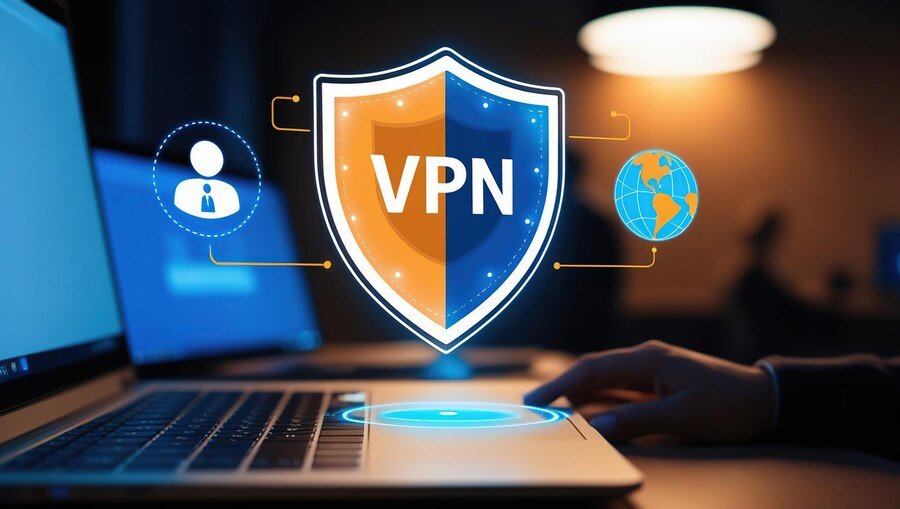
Introduction to RFC 1918
Navigating the world of networking can sometimes feel like deciphering a complex code. One key piece of that puzzle is RFC 1918, a foundational document that defines private IP addressing. But what does this mean for you and your network? Understanding RFC 1918 private IP addresses is essential for anyone looking to optimize their network infrastructure.
Private IP addresses serve as hidden gems within the expansive realm of internet connectivity. They allow devices on local networks to communicate without cluttering up public address space. Whether you’re managing a small home network or overseeing an enterprise environment, grasping the principles behind private IP addressing can empower your decisions and enhance security.
Ready to dive in? Let’s explore everything from its origins to practical applications and misconceptions surrounding RFC 1918!
What is RFC 1918?
RFC 1918 stands for Request for Comments 1918. This document was published by the Internet Engineering Task Force (IETF) in July 1996. It defines a set of private IP address ranges that are reserved for use within local networks.
These addresses are not routable on the public internet, meaning they cannot be accessed directly from outside their local network. Instead, they serve as a way to conserve the limited pool of global IPv4 addresses.
By using RFC 1918 private IP addresses, organizations can efficiently manage their internal networking without consuming valuable public address space. This approach enhances security and simplifies network management while enabling multiple devices to communicate seamlessly within a confined area.
Understanding these concepts is vital for anyone involved in network administration or design.
Why was RFC 1918 created?
RFC 1918 was created to address a growing concern in the early days of networking: the exhaustion of available IPv4 addresses. As more devices connected to the internet, it became clear that public IP addresses were limited.
The document established guidelines for private IP addressing. By designating specific ranges just for internal use, organizations could avoid depleting the global pool of IPv4 addresses. This allowed businesses to scale their networks without worrying about running out of unique identifiers.
Moreover, using private IP addresses enhances security by keeping internal network configurations hidden from external entities. It fosters an environment where local communications thrive without exposing sensitive data to the internet at large.
RFC 1918 serves as a practical solution that balances growth and sustainability in networking practices while ensuring efficient utilization of valuable resources.
The Three Ranges of Private IP Addresses
RFC 1918 defines three distinct ranges for private IP addresses. Each range serves a specific purpose within local networks.
The first range spans from 10.0.0.0 to 10.255.255.255, accommodating over 16 million unique addresses. This wide pool is ideal for large organizations needing extensive internal networking.
Next, the range from 172.16.0.0 to 172.31.255.255 provides up to one million IP addresses, fitting well for medium-sized businesses or segmented departments within larger companies.
The smallest range covers 192.168.0.0 to 192.168.255.255, offering around 65 thousand usable addresses—perfect for home networks and small offices aiming for simplicity in setup and management.
These classifications help maintain order and efficiency as devices connect without interfering with public internet addressing schemes.
Benefits of Using Private IP Addressing
Private IP addressing offers several significant advantages that enhance network management and security.
One of the main benefits is improved security. By isolating devices on a private network from the public internet, organizations reduce their exposure to external threats. This setup minimizes potential attacks, making it harder for malicious users to access internal systems.
Another advantage is efficient use of IP addresses. Since private IP addresses aren’t routed on the public internet, multiple devices within an organization can share them effectively without depleting the global IPv4 address space. This helps conserve valuable resources.
Additionally, using private IPs allows for better control over network traffic. Administrators can set up internal policies tailored specifically for their environment, optimizing performance and ensuring compliance with regulations.
Configuring private networks simplifies troubleshooting and maintenance tasks by keeping internal communication separate from public traffic.
How to Configure and Use Private IP Addresses
Configuring and using private IP addresses is quite straightforward. Begin by accessing your router’s settings through a web browser. Enter the default gateway address, usually something like 192.168.1.1.
Once inside the router interface, look for the DHCP settings to enable automatic assignment of private IPs within your chosen range—typically 10.0.0.0/8, 172.16.0.0/12, or 192.168.0.0/16.
You can also assign static private IP addresses manually for devices needing fixed identification on your network, such as printers or servers.
Make sure to avoid conflicts by checking which addresses are already in use before assigning new ones.
After configuring these settings, save changes and reboot your router if necessary to apply them effectively.
This setup allows seamless communication between devices while keeping them isolated from public networks.
The Purpose of Private IP Addressing
Private IP addressing serves a crucial role in network management. It allows devices within a private network to communicate with each other without consuming valuable public IP addresses.
By using private IPs, organizations can create expansive internal networks. This structure helps manage resources efficiently and reduces the risk of running out of available public addresses.
Moreover, these addresses enhance security by keeping internal communications hidden from external networks. They act as a shield against unwanted access, providing an additional layer of protection for sensitive information.
Private IP addressing also supports local area networks (LANs). Devices like printers and computers can be easily connected and managed without needing constant internet connectivity.
The purpose is clear: streamline communication, conserve public address space, and bolster security while maintaining operational efficiency.
Advantages of Using Private IP Addresses
Private IP addresses offer numerous advantages for organizations and individual users alike.
One key benefit is enhanced security. By using private addressing, devices are shielded from direct access over the internet. This makes it harder for malicious actors to target internal networks.
Cost efficiency also plays a significant role. Organizations can save on public IP address costs by utilizing private ranges within their local networks. This allows more flexibility without additional expenses.
Network management becomes simpler with private IPs as well. They enable administrators to organize and segment network resources effectively, leading to easier troubleshooting and maintenance.
Moreover, scalability is another important factor. Businesses can expand their internal infrastructure without worrying about depleting available public IP addresses, ensuring future growth isn’t hindered by address limitations.
In essence, these advantages make RFC 1918 private IP addressing a popular choice in many networking environments.
Limitations of Private IP Addresses
While private IP addresses offer many advantages, they come with significant limitations. One major drawback is their inability to communicate directly with the internet. Devices using these addresses must rely on a router or firewall to translate and route traffic.
This leads to potential bottlenecks in network performance. The need for Network Address Translation (NAT) can introduce latency, impacting real-time applications like VoIP or online gaming.
Additionally, private IP addressing limits the number of devices that can connect within a single network segment. Each range has a fixed number of available addresses, which may not be sufficient for large organizations or expanding networks.
Security is another consideration; while private IPs provide isolation from external threats, they are still vulnerable to attacks originating from within the same network. This creates challenges in maintaining robust security measures and managing internal risks effectively.
How to Implement RFC 1918 in a Network
Implementing RFC 1918 private IP addresses in a network is straightforward yet essential for efficient communication.
Start by selecting the appropriate private IP address range: 10.0.0.0/8, 172.16.0.0/12, or 192.168.0.0/16.
After that, assign these addresses to your devices according to your network architecture.
Ensure that each device has a unique address within the chosen range to avoid conflicts.
Next, configure your router and firewall settings to allow traffic between these private networks and any public connections through Network Address Translation (NAT).
Double-check security protocols while ensuring that access controls are adequate since traffic from outside cannot directly reach these addresses.
Regularly monitor and update your configurations as necessary to maintain optimal performance and security across the network environment you’ve established using RFC 1918 guidelines.
Common Misconceptions about RFC 1918
Many people believe that private IP addresses are entirely shielded from the internet. While they provide a layer of security, devices with RFC 1918 addresses can still communicate externally through Network Address Translation (NAT).
Another misconception is that using private IPs slows down network performance. In reality, these addresses allow for efficient internal communication and minimize the need for public address space.
Some think that private IP addressing is only suitable for large organizations. However, even small businesses benefit from this system by conserving valuable public IP resources.
There’s confusion about how many devices can connect to a network using RFC 1918 addresses. Each range supports millions of unique combinations, making it easy to accommodate growth without constantly reconfiguring networks.
Conclusion
Understanding RFC 1918 and its significance in private IP addressing is essential for network administrators and IT professionals. By recognizing the need for designated ranges of private addresses, organizations can efficiently manage their networks without depleting the finite supply of public IPs.
The benefits of using RFC 1918 private IP addresses are profound. They enhance security by creating a barrier between internal networks and the internet while also simplifying network management within an organization. Additionally, configuring these addresses is straightforward, making them accessible to users with varying levels of technical expertise.
Despite some limitations—such as reliance on Network Address Translation (NAT) for external communication—the advantages often outweigh any drawbacks. Misconceptions about privacy or security risks associated with RFC 1918 can mislead organizations away from utilizing this effective tool.
As digital demands continue to grow, understanding how to implement and leverage private IP addressing becomes increasingly important. Embracing RFC 1918 will not only optimize your network setup but also prepare you for future developments in networking technology.
RELATED POSTS
View all


